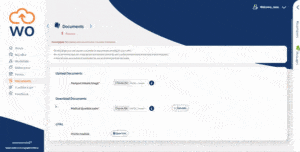Record levels of employment in the UK and the impact of Brexit are helping to shift the balance of power between employers and job candidates.
This move to an increasingly candidate driven market is forcing organisations to rethink the HR strategies and processes needed to stay competitive in today’s tough jobs market.
It’s a consequence of a UK employment rate in excess of 75% with predictions that this will increase as access to candidates is stifled by Brexit uncertainties and future legislative changes.
It’s this changing environment that has brought into the spotlight one area of the hiring cycle that has often been overlooked…employee onboarding. This covers all of the hiring tasks and processes required to turn a successful job candidate into a productive new hire.
Onboarding includes everything from handling contracts and offer letters to policy compliance, welcome packages and all of the office tasks that are needed to prepare for new starters.
It’s a tricky phase of the hiring process that more than a third (68 percent) of UK businesses are still currently handling using traditional methods – posted paperwork, emails and phone calls.
But as candidates have more options and increased leverage, the methods used to bring new hires into an organisation are having to change. Here’s why:
Time pressures
One of the major problems with a traditional onboarding approach is simply the time it takes. With paperwork having to be sent out and information manually processed, it can take weeks to bring a new new hire into an organisation.
In a candidate driven market, time is something you don’t have. Candidates will often have a number of job opportunities available and will be looking to minimise the stress and uncertainty.
Negotiation handling
With increased leverage, candidates are in a strong position to negotiate on the contract terms offered to them by an employer. Without effective processes, this can significantly extend onboarding processing times.
Fast and effective communications are required to stop losing candidates during this phase of the process. Successful candidates will often be weighing up multiple options and will choose the first one that meets their criteria.
Employee engagement
In the past, onboarding has been viewed mainly as an administrative process. But with candidates having more power, the quality and experience of joining a new organisation is becoming increasingly important.
Any kind of delays or frustrations during onboarding are liable to cause the candidate to drop-out. Minimising this risk requires hiring teams to create a fast, engaging and welcoming experience for new starters.
Risks of ghosting
Increased opportunities and changes to the way we communicate in a digital work have created the problem of ghosting. This is when successful candidates drop out of the process but fail to inform HR.
This is a particular problem with traditional onboarding approaches as hiring teams due to the amount of work that’s required to track and monitor the progress of each candidate. Often, an organisation will only realise they have been ‘ghosted’ when a new starter fails to turn up on their first day.
Staff retention
With high employment rates, employees are more liable to switch jobs. It creates the problem of staff ‘churnover’, leading to loss of talent, organisational disruption and increased recruitment costs.
Onboarding plays a vital role in this because employees relationship with their employer is moulded by their initial experiences. If they have negative experiences during onboarding they will often leave within their weeks or months.
Changing approach to onboarding
It’s to meet these new onboarding challenges that more organisations are moving to cloud-based management systems.
Webonboarding transforms the entire process by removing the need for posted paperwork or manual processing. All of the communications between HR, hiring managers and successful candidates are handled via an online portal.
It creates a fast, simple and flexible way to manage new hires and allows a hiring team to centrally monitor the progress and status of each candidate. If there’s a problem or blockage, it can be instantly identified and tackled.
By removing much of the administrative burden, it gives HR the time and resources that are needed to improve the hiring experience for new starters – creating the best possible first impressions of an organisation.




